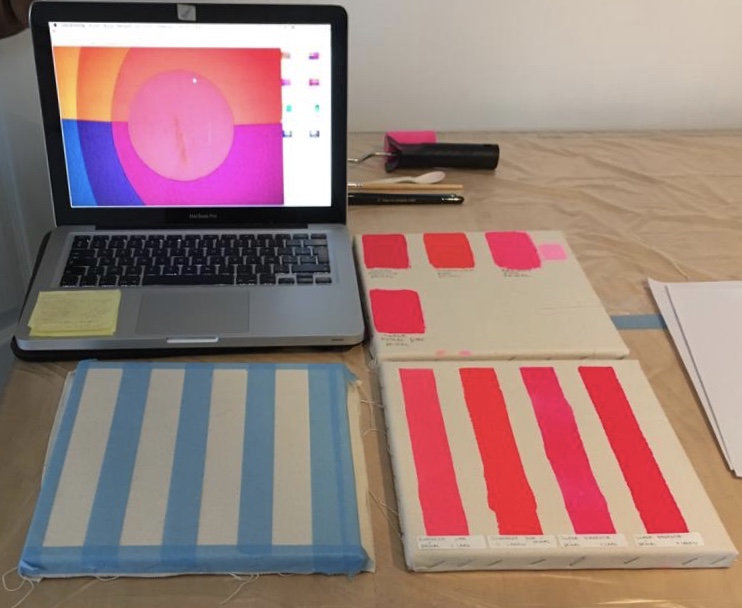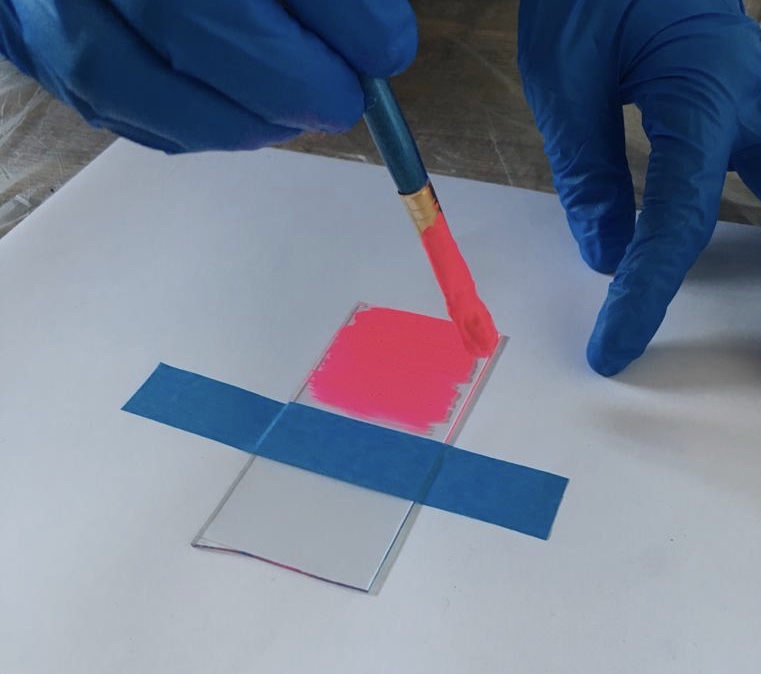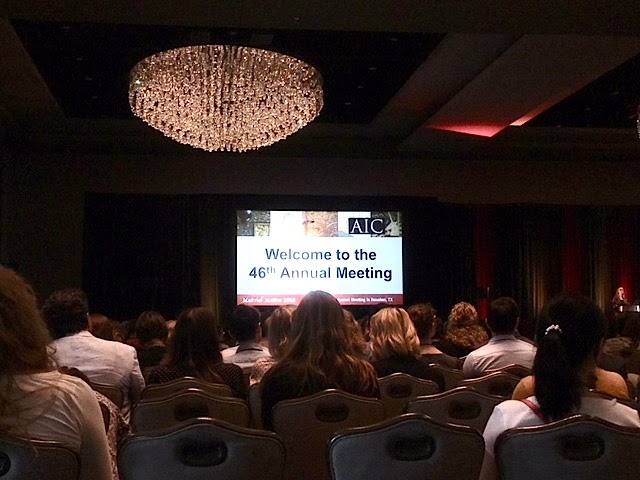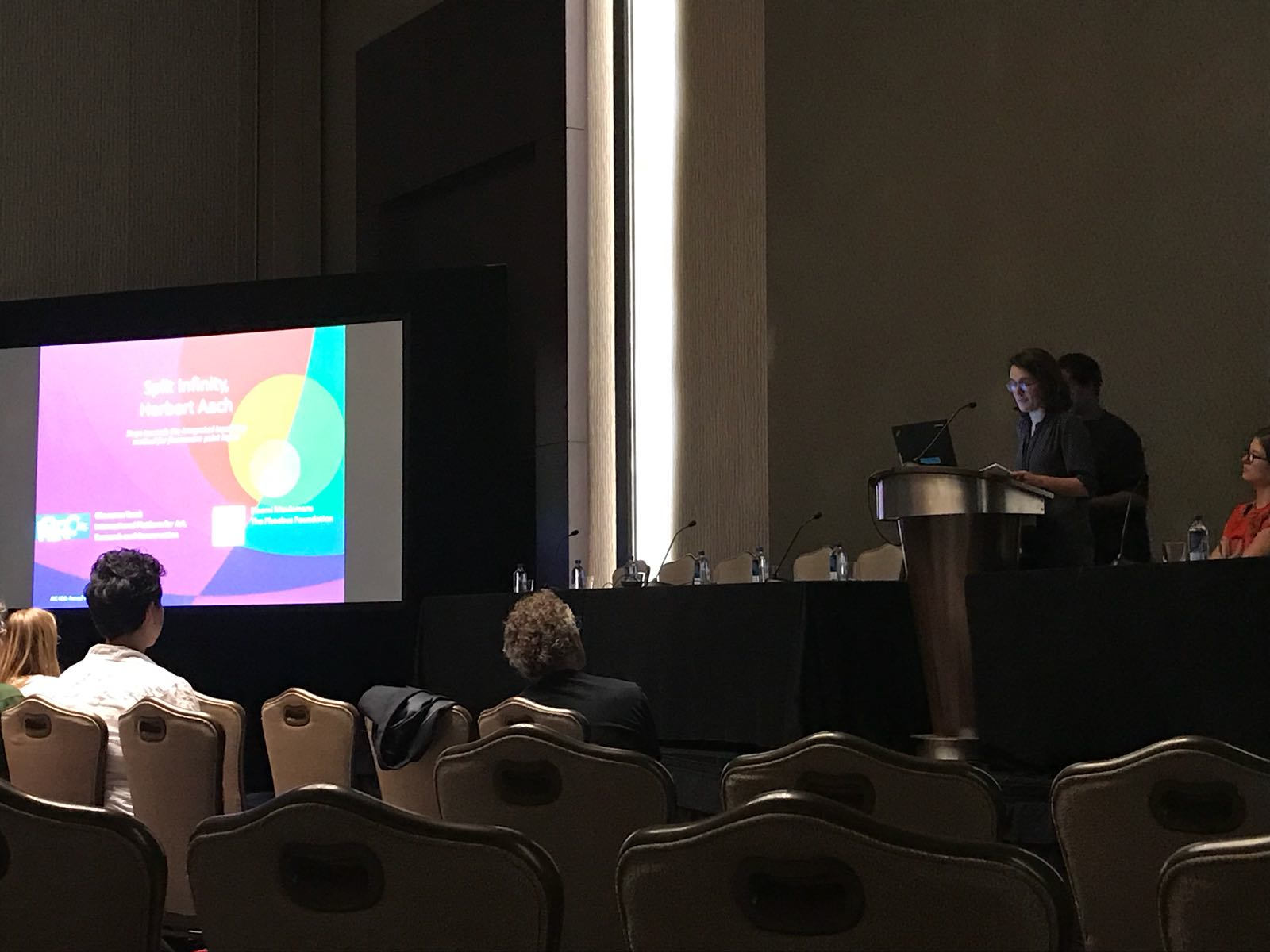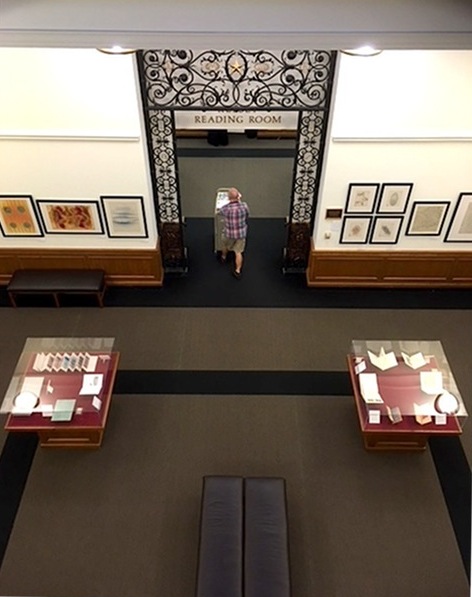
Giovanna Tamà and Naomi Meulemans developed a material-technical study following the restoration of the painting Split Infinity (1977) by Herbert Aach (1923 -1985) and the doctoral research of Stefanie De Winter (‘When Art Turned Day-Glo: Marking the Impact of Daylight Fluorescent Materials in New York Art from the 60s and 70s’). In the spring of 2018 an intensive research project was started on the conservation and protection of fluorescent paint layers.
Not only was fluorescent paint decomposed into its composition, attention was also paid to its ageing properties. The aim was to extend the life span of the fluorescence, to protect this type of paint against natural damage phenomena and to develop a suitable retouching method over time. The AIC, American Institute for Conservation selected this research for a presentation at their annual congress held in Houston, Texas (USA) in 2018.
Thanks to the AIC Annual Meeting, the largest conference on conservation and restoration in North America, the conservators had the opportunity to make a trip to the United States.
The meeting was held at the Marriott Marquis Hotel in downtown Houston, Texas from 29 May to 2 June 2018. The theme of the event was Material Matters. It was also here that research on retouching fluorescent paint was presented and shared with the many other curators and researchers.
Research
Although the conservation of modern paintings (ca. since 1945) is very different from the conservation treatments of old masters, within the group of modern works of art an enormous evolution in conservation methods can be observed. A painting that complies with traditional painting techniques but was painted with new, self-composed paint will show a very different aging phenomenon than works that were not painted traditionally but with traditional types of paint. (e.g. with a palette knife, without the use of primers)
The way in which a painting is built up and with which specific materials is therefore very decisive for the quality of the paint layer. The paintings we discuss belong mainly to the first group which allows us to focus on the use of paint materials, in this case fluorescent paint, and not so much on the painting techniques.
While preserving Herbert Aach’s (1923-1985) Split Infinity series (1976-77) fluorescent monochrome paintings, the standard retouching methods led to negative results. So far we were able to simulate the fluorescent color under stable light conditions, but as soon as the ultraviolet light increased, the retouching became disturbingly visible. In addition to these difficulties in matching the colour tones, the structure of the material differed greatly from the original paint layer, giving a visibly uneven effect.

A total of one year was spent on the analysis of various binders and pigments that can be used in the restoration of fluorescent paint layers.
Herbert Aach was an artist who made his own pigments and paint media. The fluorescent paint layers in the Split Infinity series look very dry and fresco-like and the saturation of the fluorescent pigment in the acrylic medium is much higher than the fluorescent paint sold in shops for art supplies. Herbert Aach was thus able to increase his paint quality by composing it himself.
Three significant characteristics became clear during this empirical comparison: first, fluorescent pigments age much faster than conventional pigments; after 10 years they begin to lose their intensity. Secondly, they are highly transparent due to their organic pigment composition, which means that they cannot be mixed with other non-fluorescent colours.
Thirdly, there are limits to the binding of fluorescent pigments with media because they require a very bright medium due to their high transparency. This study looked for a new retouching method that takes these specific characteristics into account and that makes it possible to paint with fluorescent pigments in the monochrome, fresco-like paint layers of Aach’s works.
A total of one year was spent on analysing various binders and pigments that can be used in the restoration of fluorescent paint layers. These tests are also closely monitored and to this day checked for ageing effects.
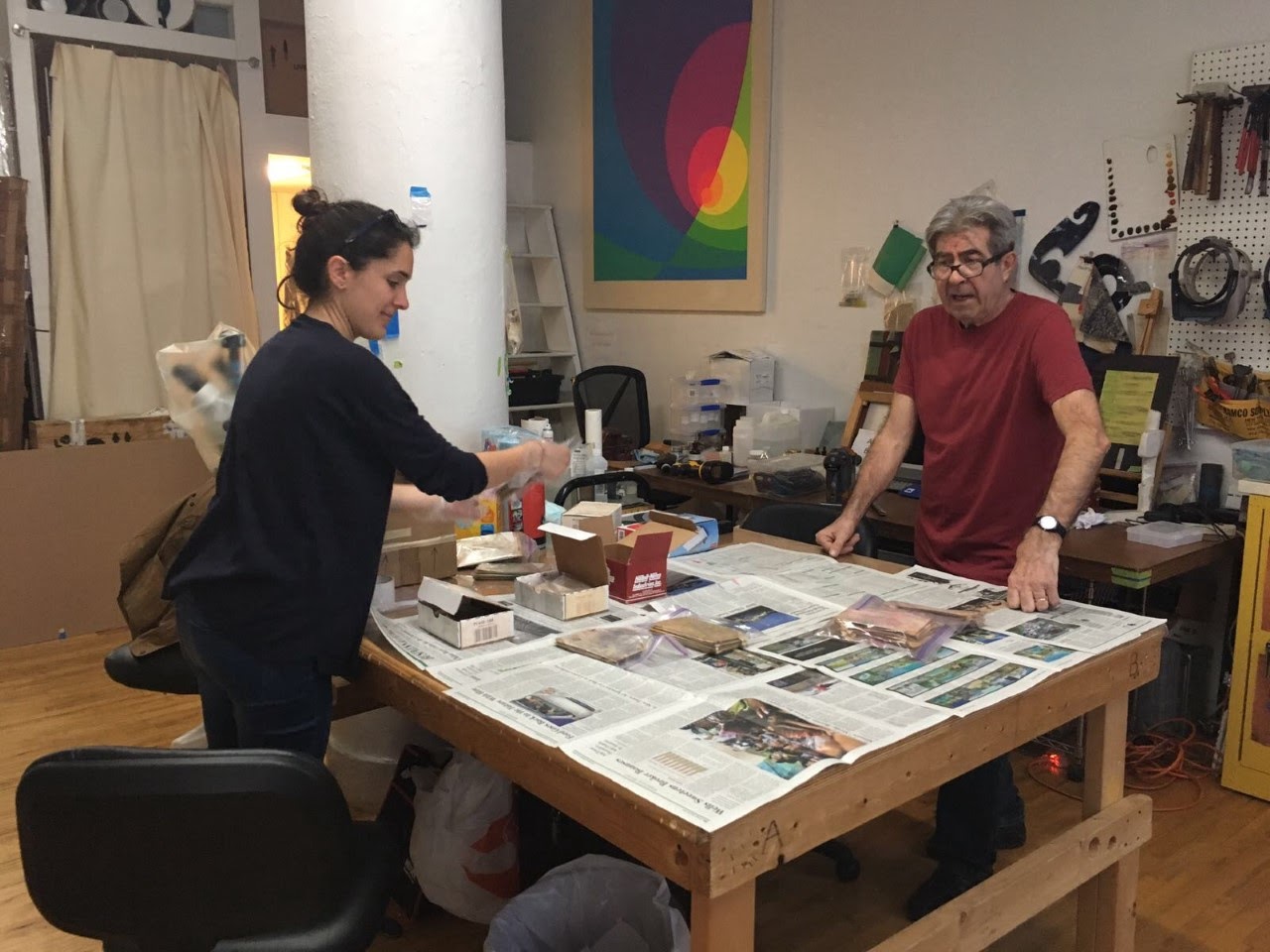
Hand crafted pigments, still available from Herbert Aach, were collected in New York where the artist’s widow Doris Aach invited us into her home. The experience of discovering more and more of the artist’s works was overwhelming. The many paintings, present in the apartment, had the same power and energy as the painting that was restored in Belgium. The pigments, carefully maintained by Doris, were collected in collaboration with restorer Luca Bonetti and packed for further research in Belgium. This unique experience became certainly a great value to the research.
The retouching tests, which were gradually developed in Belgium, were artificially aged and checked for resilience, colour fastness and fluorescence. All this was mapped out together with the scientific institute ‘Royal Institute for Cultural Heritage’ (KIK/IRPA Brussels). This made it possible to reduce the number of options for inpainting and treating damaged fluorescent paint layers to three potential paint combinations.
D-DAY – The AIC Annual Meeting
The meeting, which brings together more than 1,000 participants from different parts of the world, focused that year on material research and the emergence of innovative treatment/techniques and new ways of “looking”. Ideal for this fluorescent pigment research to be launched within the conservation world in order to further acquire and share knowledge.
On the basis of examples and test results from the KIK-IRPA, the lecture discussed which approach can be innovative and effective for the preservation of fluorescent paint layers. Various aging tests were explained and we discussed which binders and pigments were effective. It soon became clear that the same problems were present in many art collections.
In addition to the many lectures, numerous guided tours, walking tours and workshops were organized. The Houston Downtown walking tour, a guided tour of Houston’s most prominent buildings and architecture, and a tour of the new restoration studio and depot of the Texas A&M Library gave a glimpse behind the scenes of what first seemed like a static city. To our amazement there was not only a fantastic array of art to discover, but we met many fascinating researchers in the heart of warm Texas .

Kremer Water Color Set Fluorescent Colors 
Houston Down Town 
Texas A&M Library
In the exhibition hall of the AIC conference it is the time to network and share ideas and results. New innovative materials were on display, such as those from KremerPigments, where we were able to test the ‘Kremer Watercolor Set Fluorescent Colors’, which may apply to our further research. Golden Colours also had an overlap with our research area in Daylight Fluorescent Paint. Sharing each other’s knowledge helped us broaden our vision and opportunities to repair and retain highly sensitive fluorescent paints in the future.
Want to know more about fluorescent pigments? Read more about the restoration and research of the painting ‘Bampur’ by Frank Stella here.
For more information about the research and restoration of Split Infinity, Herb Aach please feel free to contact us via info@privatearttours.be.
